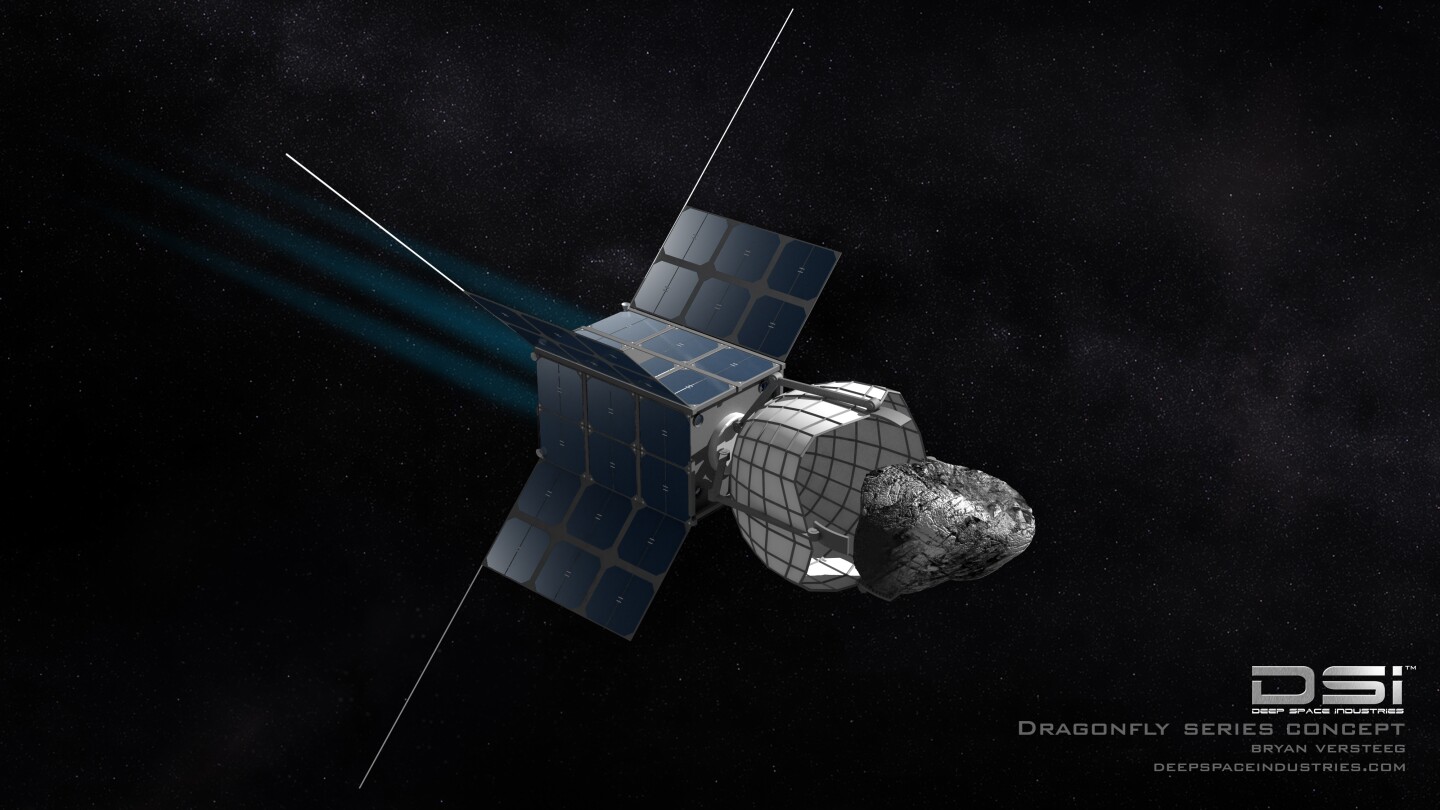The asteroid mining business got a bit more crowded as a new concern called Deep Space Industries (DSI) enters the ring. The company announced its public launching at the Museum of Flying in Santa Monica, California where a panel presentation of officials and guests outlined DSI’s philosophy and plans for becoming a major force in opening up asteroid mining within a few years.
DSI, currently based in McLean, Virginia, was started mid-2012 and is currently seeking additional investors and customers. According to the panel, there are 9,500 near-Earth asteroids with 1,700 of these easier to get to than the Moon. The company believes that by keeping costs down and concentrating on creating a series of near-term returns it’s possible to make mining these asteroids not only feasible, but a business field capable of almost unlimited expansion.

The basic idea behind DSI is to start out very small and eventually grow into a major supplier of propellants and materials for space exploration and exploitation. DSI’s immediate plan is to carry out prospecting for possible candidates for mining and selling the data to governments and businesses.
Eventually, the company would expand into retrieving raw feedstock from asteroids and converting it into into air, water and propellant. The propellant could be supplied to geostationary communications satellites, a market DSI claims is currently worth US$25 million per ton due to the cost of transporting it from Earth.
Meanwhile, water, air and propellant would also be offered to the ISS and other space stations as well as to NASA and other space agencies engaged in deep space missions. To this would be added manufacturing of spare parts in space using asteroid materials and then much larger engineering operations and the extraction of precious metals.
DSI emphasizes that it isn’t in the business of launching satellites or building rockets, leaving that to other concerns. Rather, it intends to get its own satellites into orbit by sending up several at once in a piggyback operation with other satellite launches
Though DSI’s plans are ambitious, it will rely on using technologies and off the shelf components with small, standard interfaces and low costs. Its first probes will use cubesat technologies and be about the size of a laptop.

The first DSI spacecraft is the Firefly. According to a company spokesman, it will cost US$20 million to deliver three finished versions into orbit. Based on cubesat and nanosat design, its function is to target candidate asteroids based on value, return times and learning their composition, structure and spin rate.
The next craft is the Dragonfly. It’s job is asteroid capture and retrieval, though only as very small samples for study and processing experiments. The customers for these missions would be researchers and private collectors who’d probably buy a Moon rock if one came on the market.

The first really big DSI spacecraft is the Harvestor (sic), which is large enough to require a Falcon 9, Falcon Heavy, Proton or Ariane 5 rocket to lift it into space. It’s intended to bring back asteroids on a wholesale basis to the tune of thousands of tons per year, though the size of individual asteroids brought back to Earth orbit would be limited to about 30 meters (100 ft) in diameter for safety reasons.
Asteroids of that size routinely burn up in Earth’s atmosphere every year, so these wouldn't pose much of a hazard. These would be used for harvesting water, propellant, metals, and building and shielding materials. This would work in conjunction with the Fuel Refinery craft, which refines water and hydrocarbons found in carbonaceous asteroids.
One part of DSI’s plans is to fabricate spare parts and other items in orbit for customers. Toward this end, the Microgravity Foundry uses 3D printers to produce complex metal components using a simple process with few moving parts. It will fabricate structural parts, fasteners, gears, and other components to repair satellites and for larger projects, such as solar power satellites. The technology will also be licensed for Earthside use.
Though it sees its role as mainly one of providing materials and parts for other space-faring organizations, DSI also recognizes the potential of asteroid mining. It not only means greater abundance of precious and rare-earth metals for Earth, but also the building of solar power orbiters, cheaper Mars missions and space settlement. As part of this potential, the company said that it plans to forge a new partnership with the U.S. government and involve corporate marketers that will result in more public participation.
DSI anticipates the first Firefly flights taking place in 2015.
The video below outlines DSI’s plans.
Source: DSI












